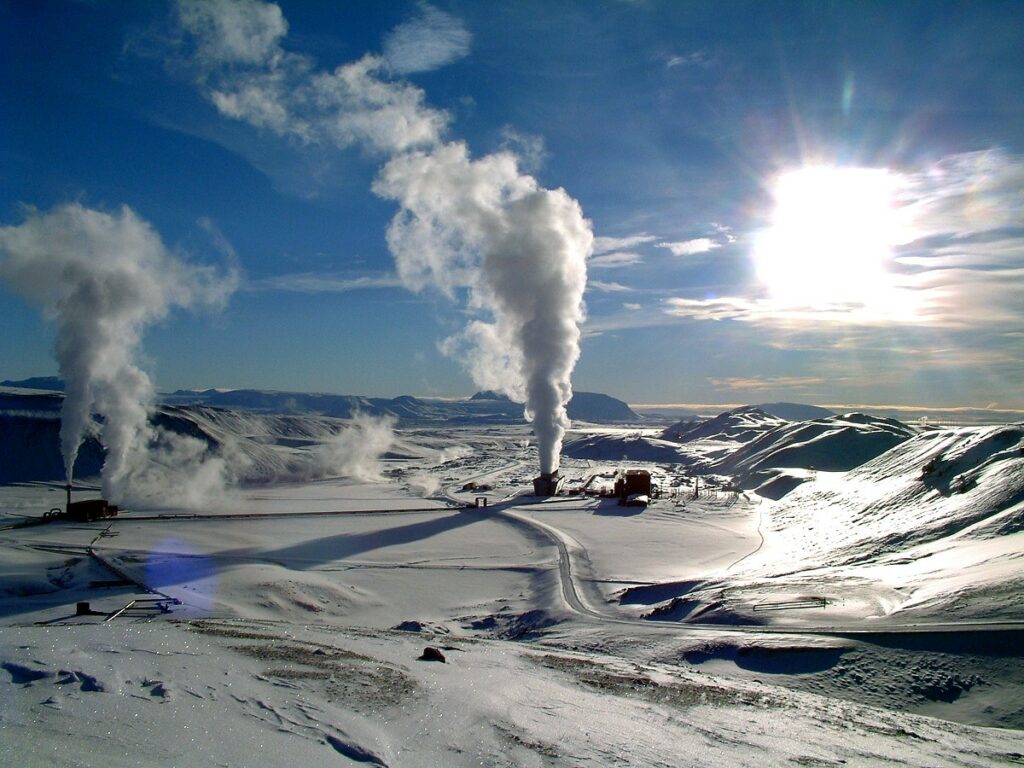In our heating a greenhouse video, we interview JD Sawyer from the Aquaponic Source. JD ran the Grow Haus hydroponic and aquaponic greenhouses in Denver, Colorado, and utilized geothermal methods to extend the heating and cooling of the greenhouses.
We were down there interviewing JD about the work they were doing in the Denver community using aquaponics. We asked JD about the geothermal heating (or “Earth Battery”) that had been installed in the Grow Haus.
I’d seen it a year or two earlier when the building was still under construction, so I was curious about how it was performing for them. I was also curious because we have a small Low Grade Geothermal (LGG) System installed in our greenhouse.
JD mentioned that it seemed to be working well for them, and when it had been running, I’d been impressed with the low-energy cooling capability of the system.
What is low grade geothermal (LGG)?
Concept
For those of you who haven’t heard of LGG, it’s a method of using the thermal mass of the earth to both store energy (cooling; cycling hot air through to get cold air out), and dispense energy (heating; cycling cold air through to get cool air out).
Usually the way the system is set up is by excavating down below the floor of the greenhouse or in some instances the land adjacent.
The most effective methods bury several feet of 4-6 inch corrugated septic tubing for every square foot of space being heated/cooled, with the intake and outflow pipes placed so that air flows though the space from the outflow to the intake. Air is then circulated through the underground system.
During the summer, humid, hot air is circulated through the system, where the cool temperatures of the earth condense the moisture in the air, and the heat in the air is transferred to the soil around the tubes, emerging cooler and drier than it went in. In this way, the ground surrounding the system actually becomes a giant battery of sorts, storing energy transferred from the hot greenhouse.
In the winter, the air circulates through the system and comes out a constant 50-55 degrees all winter long, in some instances actually drawing off of the stored summer heat.
Obviously, the tubing system must be placed below the frost line at a depth where the soil temperature remains constant year round. Here in Laramie, that’s about 6’ deep, but it varies from place to place.
Low Grade Geothermal Pioneers
There have been a couple of permaculture folks who have championed the technique, but in our area, there is a greenhouse grower that really promoted the technique, in fact, running the entire heating and cooling for the greenhouse complex and house off of a LGG system that he designed and implemented many years ago.
The farm is called Citrus in the Snow, and it is an excellent example of how LGG systems can be used to inexpensively heat and cool greenhouses with nothing more than a squirrel cage blower and buried tubing.
Benefits and Cost of Low Grade Geothermal
I find LGG systems very interesting because they represent a very simple and accessible technique for heating and cooling that anyone can implement on the front end of a build.
While the cost is somewhat high to put the system in- mainly for the necessary dirt work- the potential for long term, relatively free heating and cooling definitely outweighs the cost.
More information
If you’re interested in finding out more about LGG systems, check out some the permaculture channels on YouTube, GrowHaus in Denver, and our YouTube video on our greenhouse setup.






